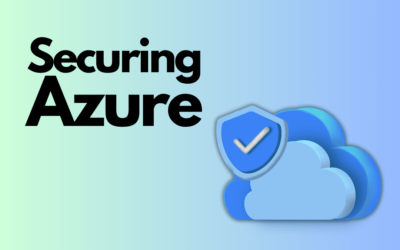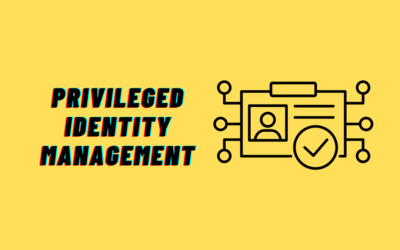In today’s digital landscape, understanding the risks associated with network security is paramount for individuals and organizations alike. Cyber threats come in various forms, including malware, phishing attacks, and ransomware, each designed to exploit vulnerabilities within a network. Malware, for instance, refers to malicious software that can infiltrate systems, steal sensitive information, or disrupt operations.
Phishing attacks often involve deceptive emails or messages that trick users into revealing personal data or login credentials. Ransomware takes this a step further by encrypting files and demanding payment for their release, leaving victims in a precarious position. The sophistication of these threats continues to evolve, making it increasingly challenging to safeguard networks.
Cybercriminals are constantly developing new techniques to bypass security measures, which means that organizations must remain vigilant and proactive in their defense strategies. Additionally, the rise of the Internet of Things (IoT) has introduced new vulnerabilities, as more devices connect to networks without adequate security protocols. Understanding these risks is the first step in creating a robust network security framework that can withstand potential attacks.
Contents
- 1 The Impact of Network Security Breaches: Financial and Reputational Consequences
- 2 Implementing Strong Password Policies: The First Line of Defense
- 3 Educating Employees: The Human Factor in Network Security
- 4 Utilizing Firewalls and Encryption: Essential Tools for Network Protection
- 5 Regular Software Updates: Keeping Your Network Safe from Vulnerabilities
- 6 Backing Up Data: A Crucial Step in Network Security
- 7 Seeking Professional Help: The Benefits of Outsourcing Network Security
- 8 FAQs
Key Takeaways
- Network security breaches can lead to financial loss, reputational damage, and legal consequences.
- Implementing strong password policies is crucial for protecting your network from unauthorized access.
- Educating employees about the importance of network security can help prevent human errors that may lead to breaches.
- Firewalls and encryption are essential tools for protecting your network from external threats.
- Regular software updates are necessary to patch vulnerabilities and keep your network safe from cyber attacks.
The Impact of Network Security Breaches: Financial and Reputational Consequences
Immediate Financial Implications
When a network security breach occurs, organizations often face immediate costs related to incident response, such as forensic investigations and system repairs. These expenses can quickly escalate, especially if sensitive customer data is compromised.
Long-term Financial Burden
The average cost of a data breach can reach millions of dollars when considering legal fees, regulatory fines, and lost business opportunities. This financial burden can cripple small businesses and significantly impact larger corporations.
Reputational Damage and Lasting Effects
Beyond the immediate financial implications, the reputational damage caused by a security breach can have long-lasting effects. Customers may lose trust in an organization that fails to protect their data, leading to decreased sales and customer loyalty. In an age where consumers are increasingly aware of data privacy issues, a single breach can tarnish a brand’s image for years.
Implementing Strong Password Policies: The First Line of Defense

One of the simplest yet most effective ways to enhance network security is by implementing strong password policies. Passwords serve as the first line of defense against unauthorized access to sensitive information and systems. A strong password typically includes a combination of uppercase and lowercase letters, numbers, and special characters, making it difficult for cybercriminals to guess or crack through brute force methods.
Organizations should encourage employees to create unique passwords for different accounts and change them regularly to minimize the risk of compromise. In addition to creating strong passwords, organizations should consider implementing multi-factor authentication (MFA) as an added layer of security. MFA requires users to provide two or more verification factors before gaining access to an account, significantly reducing the likelihood of unauthorized access.
By prioritizing strong password policies and incorporating MFA, organizations can create a more secure environment that deters potential attackers from exploiting weak credentials.
Educating Employees: The Human Factor in Network Security
| Metrics | Data |
|---|---|
| Number of Employees Trained | 500 |
| Training Completion Rate | 90% |
| Incident Reports Before Training | 20 |
| Incident Reports After Training | 5 |
| Employee Satisfaction with Training | 85% |
While technology plays a crucial role in network security, the human factor cannot be overlooked. Employees are often the weakest link in an organization’s security chain, making education and training essential components of any security strategy. Cybercriminals frequently target employees through social engineering tactics, such as phishing emails that appear legitimate but are designed to steal sensitive information.
By educating employees about these tactics and how to recognize potential threats, organizations can significantly reduce their risk of falling victim to cyberattacks. Regular training sessions should cover various topics related to network security, including password management, recognizing phishing attempts, and safe browsing practices. Additionally, organizations should foster a culture of security awareness where employees feel empowered to report suspicious activities without fear of repercussions.
By investing in employee education and creating an environment that prioritizes security, organizations can strengthen their defenses against cyber threats and minimize the likelihood of breaches.
Utilizing Firewalls and Encryption: Essential Tools for Network Protection
Firewalls and encryption are two essential tools that play a critical role in protecting networks from unauthorized access and data breaches. A firewall acts as a barrier between an internal network and external threats by monitoring incoming and outgoing traffic based on predetermined security rules. By filtering out potentially harmful traffic, firewalls help prevent unauthorized access to sensitive information and systems.
Organizations should implement both hardware and software firewalls to create multiple layers of protection. Encryption adds another layer of security by converting sensitive data into unreadable code that can only be deciphered with the correct decryption key. This is particularly important for protecting data in transit, such as when information is sent over the internet or stored on cloud services.
By utilizing encryption protocols like SSL/TLS for web traffic or end-to-end encryption for communications, organizations can ensure that even if data is intercepted by cybercriminals, it remains secure and unreadable. Together, firewalls and encryption form a robust defense against cyber threats.
Regular Software Updates: Keeping Your Network Safe from Vulnerabilities
One of the most critical yet often overlooked aspects of network security is the importance of regular software updates. Software developers frequently release updates to address vulnerabilities that could be exploited by cybercriminals.
Organizations should establish a routine for checking for updates across all software applications and operating systems to ensure they are running the latest versions with the most recent security patches. In addition to operating systems and applications, organizations should also pay attention to firmware updates for hardware devices such as routers and switches. These devices can also harbor vulnerabilities that cybercriminals may exploit if left unpatched.
By prioritizing regular software updates as part of their network security strategy, organizations can significantly reduce their risk of falling victim to cyberattacks that exploit known vulnerabilities.
Backing Up Data: A Crucial Step in Network Security
Backing up data is a crucial step in any comprehensive network security strategy. In the event of a cyberattack or data breach, having secure backups ensures that organizations can quickly recover lost or compromised information without significant disruption to their operations. Regularly scheduled backups should be performed for all critical data, including customer information, financial records, and operational files.
These backups should be stored securely offsite or in the cloud to protect against physical disasters such as fires or floods. Moreover, organizations should test their backup systems regularly to ensure that data can be restored efficiently when needed. This includes verifying the integrity of backup files and ensuring that recovery processes are well-documented and understood by relevant personnel.
By prioritizing data backups as part of their network security strategy, organizations can mitigate the impact of potential breaches and maintain business continuity even in challenging circumstances.
Seeking Professional Help: The Benefits of Outsourcing Network Security
As cyber threats continue to grow in complexity and frequency, many organizations are turning to professional help by outsourcing their network security needs. Engaging with cybersecurity experts allows organizations to leverage specialized knowledge and resources that may not be available in-house. Managed security service providers (MSSPs) offer a range of services, including threat monitoring, incident response, vulnerability assessments, and compliance management.
Outsourcing network security not only provides access to advanced tools and technologies but also allows organizations to focus on their core business functions without being bogged down by cybersecurity concerns. Additionally, MSSPs often have access to threat intelligence that enables them to stay ahead of emerging threats and implement proactive measures to protect their clients’ networks. By seeking professional help in network security, organizations can enhance their overall security posture while ensuring they remain compliant with industry regulations.
By implementing strong password policies, educating employees about potential threats, utilizing essential tools like firewalls and encryption, keeping software updated, backing up data regularly, and considering professional help when needed, organizations can create a robust defense against cyber threats. As technology continues to evolve, so too must our approaches to network security—ensuring that we remain one step ahead of those who seek to exploit vulnerabilities for malicious purposes.
If you are interested in learning more about network security, you may want to check out Chetan Sroay’s article on the OSI model guide. This comprehensive guide breaks down the seven layers of the OSI model and explains how they work together to ensure secure and efficient communication across networks. You can find the article here.
FAQs
What is network security?
Network security refers to the measures and practices put in place to protect a network and the data it carries from unauthorized access, misuse, modification, or denial of service.
Why is network security important?
Network security is important because it helps to protect sensitive information, prevent unauthorized access, and ensure the integrity and availability of data and resources within a network.
What are some common threats to network security?
Common threats to network security include malware, phishing attacks, DDoS (Distributed Denial of Service) attacks, insider threats, and unauthorized access.
What are some common network security measures?
Common network security measures include firewalls, intrusion detection and prevention systems, encryption, access control, network segmentation, and regular security audits and updates.
What is the role of encryption in network security?
Encryption is used in network security to protect data by converting it into a code that can only be deciphered with the correct key, making it unreadable to unauthorized users.
How can businesses improve their network security?
Businesses can improve their network security by implementing strong access controls, regularly updating and patching software, training employees on security best practices, and conducting regular security assessments and audits.







0 Comments